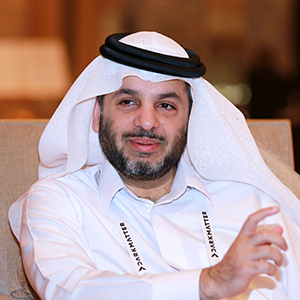Q: DarkMatter recently participated in a CIO Summit in the Middle East where you had an opportunity to meet with senior IT executives from the Oil & Gas, Public Sector, Financial Services and other sectors. What was the main takeaway from those meetings?
Faisal Al Bannai: Our conversations across industry segments in the Middle East remain consistent. Institutions are realising at differing rates and on various levels that cyber security is becoming a central theme for the further advancement of their businesses and industries.
We also find an acknowledgement by entities that they do not have a full understanding of the threat landscape that they face, who the main threat players are, what data assets they are specifically targeting, or how best to prepare for possible attacks.
As in other parts of the world, the number of cyber breaches being picked up and reported by the media is increasing rapidly. We see the Public Sector (including critical national infrastructure), Financial Services, Oil & Gas, and Telecom being sectors that are intensively targeted by cyber criminals given their high profile and the potential financial or strategic gains to be made.
Our conversations with entities across all of these sectors, and institutions in general, centres around our belief that contextualisation is the first and most important step towards an effective and actionable cyber programme. An entity cannot defend itself from what it does not understand, and so it is crucial it familiarises itself with its cyber risk profile before any management of the risk can begin in earnest. This involves the entity understanding its assets, its vulnerabilities, the full range of threats it may face, and the capabilities of those threats.
Our cyber security capabilities, which we look to pass along to our clients, are underpinned by a commitment to the DarkMatter Cyber Security life-cycle, which is a four-stage approach encompassing planning, detection, protection, and recovery.
Q: DarkMatter earlier this year opened an R&D centre in Toronto, Canada. What is the main focus of the research activities in the centre?
Al Bannai: DarkMatter's facility in Toronto focuses on the advancement of our secure communications technologies and works in concert with our R&D centres in the UAE and China. The facility is expanding rapidly and we continue to actively seek to hire engineers with experience across multiple disciplines and planforms, including embedded systems, mobile, desktop, server and IoT.
DarkMatter's secure communications applications are designed to offer government entities and security-conscious businesses in the Middle East region and further afield the ability to deploy and utilise a regionally developed, world-class offering. Earlier this year we announced the introduction of our Voice and Chat application for iOS and Android, which was developed with the support of the centre in Toronto.
The application provides end-to-end secure communications, based on the latest advancements in cryptography, cryptographic implementations, and network protocols. It is based on a software and hardware security co-design and incorporates an advanced hardware-based cryptographic chip to ensure security and prevent tampering.
The Voice and Chat application also features secure back-end infrastructure to allow secure communications, and was implemented in partnership with leading technology firms. DarkMatter experts and global test and validation labs also conducted extensive black-box and white-box testing of the application.
Q: What drove your entry into the secure communications space with your Secure Voice and Chat application? What are the opportunities you see for DarkMatter in this space?
Al Bannai: I have been personally involved in the Information and Communications Technology (ICT) sector for almost 20 years, and within that time I have witnessed it becoming increasingly converged. Given the amount of data being transmitted across networks and the number of connected devices and sensors in the modern world, cyber security has grown to become a critical issue for protecting nations and their digital assets.
One only needs to read the news headlines around the world on a daily basis to see how the number and sophistication of cyber breaches is rising all the time, and some of the consequences of these cases are dire.
The growth in the use of mobile connectivity, and smartphones in particular, made it clear that there was a genuine requirement for these types of devices to become better protected as their processing power and level of interconnectivity increased. Cameras, location services, and downloadable applications all contribute to increasing the attack surface faced by smartphones, and our Secure Communications Suite looks to minimise that threat.
DarkMatter's suite is already vetted and approved, protecting mobile voice and video communications, chat, email, and file sharing, as well as device management on iOS and Android smartphones, and all types of embedded devices. DarkMatter's suite of mobile applications runs on hardened operating systems, and is enabled via managed services across our secure cloud infrastructure, or through onsite deployments for clients wishing to manage the infrastructure themselves.
Thus, we provide services and products targeted at protecting the confidentiality and integrity of voice; video and overall data communication over the mobile network, IP layer.
Q: DarkMatter has sponsored a workshop on some of the cybersecurity challenges facing organisations in the Middle East region. What do you want participants to know about initiatives like Resilient Smart Governments and National Security Operations Centres?
Al Bannai: The Middle East is a complex mix of developed and developing economies, with varying levels of infrastructure deployment, and ICT connectivity. Compounding these variances are the geo-political overtures present in the region, which create a patchwork of allies and adversaries in a concentration that is probably not found anywhere else on the planet.
As I stated earlier, it is crucial for an entity to gain awareness of its cyber environment, and only once the organisation has a firm handle on its risk profile can it then move to take appropriate steps to implement a cyber security programme, which is effectively a three-part process encompassing visibility, intelligence and integration.
Visibility means truly understanding the assets, configurations, and users of the entity's network, systems, information, and its current state. Intelligence helps an organisation understand the threats it faces as well as the capabilities, motivation, and resources of the potential attacker. Integration aggregates the information found in the other two phases, and displays it in a format that can be readily understood by decision makers to enable them to act quickly.
These three steps are best undertaken by a cyber security specialist that is based in the region and understands that often-time the success of a sustainable cyber security posture depends on more than just technology, people, and processes.








